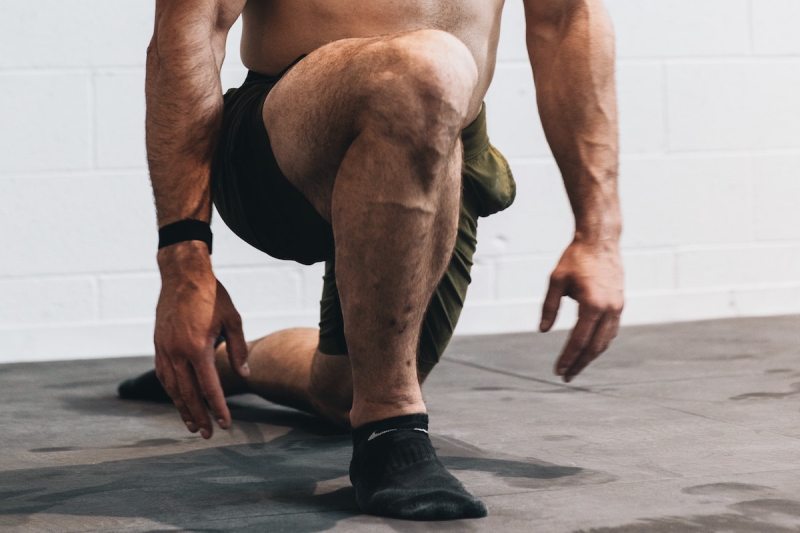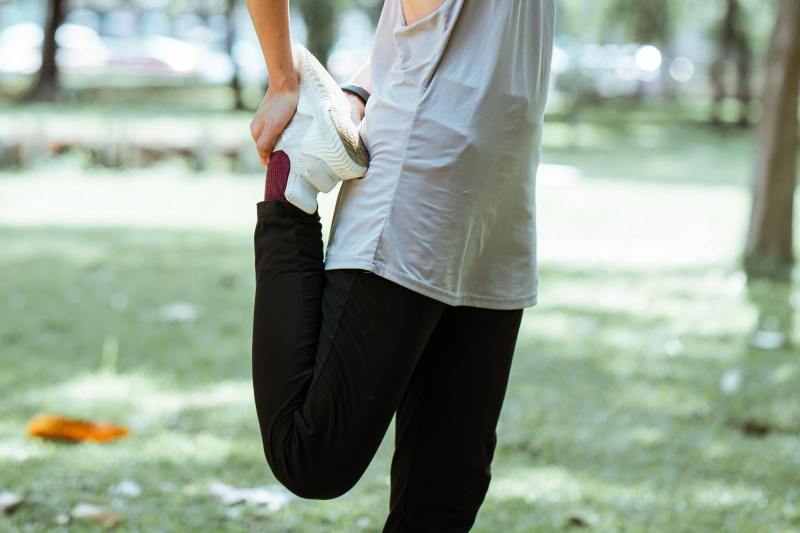
Did you know that the most voluminous human muscle is the quadricep femoris?
The quadriceps femoris, also called quads, are muscles in the anterior or front of the thigh. The quad muscles include the rectus femoris, vastus lateralis, vastus medialis, and vastus intermedius. These muscles play a significant role in daily movements such as walking, running, sitting, biking, and climbing stairs.
Due to your daily activities and other reasons, which we will soon explore, your quad muscles might become tight. This reduces your range of movement and increases your risk of injury. However, by stretching your quads, you reduce the risk of injury, increase your range of motion and improve your fitness game.
In this piece, we will dive into the world of quads. You will learn about tight quads and how to stretch quads to prevent injuries.

Signs you have tight quads
Although it is more reliable and ideal for your physician or physical therapist to examine you, you can still identify tight quads through the following signs:
- Pain felt around the anterior or front part of the thigh.
- Lower back pain from the quads pulling on the pelvis.
- Difficulty in bending or straightening the knee without pain or discomfort.
- Reduced range of movement around the knee or hip joint.
- Weakness in the upper part of the leg and lower body.
- In severe cases, there might be visible inflammation.
- Having hip pain or tight hips muscle.
Alternatively, you can do a quick and easy exercise to know whether or not you have tight quads. To do this, you can use a partner. Lie face down on a flat and comfortable surface, and let your partner push your heel towards your glutes.
The presence of knee pain or inability to touch your buttocks with your heel while doing this exercise suggests that you might have tight quadriceps.

What causes tight quads?
Sedentary lifestyle and poor posture
Sitting for long periods, e.g., in desk jobs or during a long journey, can make your quadriceps shortened and tight. Next, poor posture, e.g., slouching, can further worsen the issue. Here, the quads stay contracted, leading to chronic tightness and discomfort. Therefore, it is necessary to take walks or stretch occasionally after prolonged sitting or standing.
Overuse and intense exercise
Engaging in a cycle of repetitive and rigorous physical activities, such as running, biking, or weightlifting, with insufficient intervals for rest and proper recovery, can result in tightness within the quadriceps. The strain imposed on these quad muscles due to the demanding nature of these activities can prompt them to become contracted and tense. Over an extended period, this pattern can give rise to a state of muscular imbalance and prolonged tightness.
Muscle imbalance
Muscle imbalance occurs when one muscle group becomes stronger than the other muscle groups that work opposite it. For example, if your quadriceps are stronger than your hamstrings (the muscles in the back of your thigh), it can cause an uneven pull on your knee joint. This can lead to tightness in your quadriceps and pain in your knee.
There are a few things you can do to correct muscle imbalances. One is to do targeted controls that strengthen your weaker muscle groups. For example, if your hamstrings are weak, you can do exercises like hamstring curls and leg extensions. You can also do stretches to help improve flexibility in your tight muscles.

5 stretches for tight quads
1. Standing quad stretch
The standing quad stretch is one of the most common stretches that is usually done by athletes before exercise. You can do it anywhere, and all you need for this stretch is support, which could be a wall or chair.
Instructions:
- Stand close to a wall or chair and hold on to it for support and balance.
- Bend your knee and use your other hand to bring your foot to your glutes.
- Gently try to bend your knee as far as possible.
- Maintain that position for 30 seconds before returning to the standing position.
- Repeat this a few times with each leg.
2. Prone quad stretch
The prone quad stretch requires using the floor as a support. Here, lie on your stomach on the floor or on a flat, comfortable surface. The floor aids in stabilizing your pelvis, reducing rocking, and enhancing your stretch.
Instructions:
- Find a comfortable floor or flat surface and lie on your stomach.
- Gently bend your knee as far as possible, holding your ankle to help pull your foot towards your bottom. Use a strap or towel around your ankle to help pull it if it is difficult for you to do.
- Sustain this position for up to 30 seconds.
- Return to the initial starting position and do the exercise on the other leg.
3. Kneeling quad stretch
The kneeling quad stretch is ideal if you struggle to maintain balance while doing the standing quad stretch. It helps to loosen the hip muscles and reduces knee pain. It is a straightforward yet highly effective exercise for enhancing quad flexibility and promoting better muscle balance.
Instructions:
- To do the kneeling quad stretch, kneel on the floor with one leg in front of you.
- Gently bend the knee you are kneeling on and grab your foot with your hand, pulling it up towards your buttocks.
- Sustain this stretch for up to 30 seconds.
- Return to the initial starting position and repeat with the other leg.
4. Partner quad stretch
With this quad stretch, your partner provides support and helps you with the necessary movement.
It is a technique for enhancing flexibility and relieving tightness in the quadriceps muscles. The partner quad stretch provides a deeper stretch and encourages shared engagement in improving muscle strength and overall physical well-being.
Instructions:
- Lie on your stomach or stand opposite your partner with your feet shoulder-width apart.
- Let your partner grab one of your feet and push it up toward your glutes.
- Let your partner sustain this stretch for up to 30 seconds.
- Return to the initial starting position before switching to the other leg.
5. Side lying quad stretch
The side lying quad stretch is similar to the standing quad stretch. However, it is performed without weight on the leg, making it a preferable choice if you struggle to maintain balance on one leg. This position can also help if you have trouble aligning your spine correctly.
Instructions:
- On a comfortable flat surface, lie on your right side.
- Use your right hand to hold up your head for balance.
- Gently bend the knee of your left leg and use your left hand to grab your left ankle, and pull your left leg up behind your glutes.
- Maintain your right leg in a straight position.
- Ensure that you keep your knees together and thrust your hips forward.
- Maintain this stretch for 30 seconds before switching to your left side.



